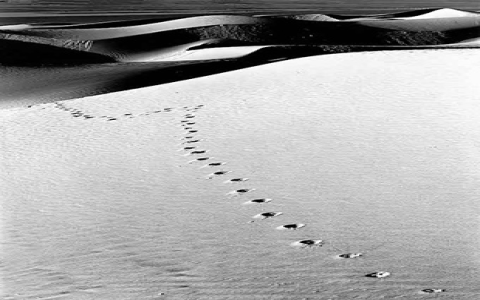In the vast expanse of the desert, the lines of dunes are like exquisite paintings drawn by nature, full of endless charm and mystery. Mastering the photography techniques of dune line shapes allows these unique landscapes to be perfectly captured in the lens, revealing the astonishing artistic beauty of the desert.

Firstly, the choice of shooting time is of utmost importance. During the early morning and late afternoon, when the sun is at a lower angle, the light shines obliquely on the dunes, capable of outlining clear and layered lines. At this time, the sunlit side of the dunes is tinted with a warm orange-red hue, while the shaded side is immersed in deep shadows. This strong contrast between light and dark makes the lines more prominent and gives a three-dimensional effect. For example, in the early morning of the Sahara Desert, when the first rays of sunlight strike the undulating dunes, the smooth lines seem to be endowed with life. Under the interweaving of light and shadow, they wind into the distance, creating a serene yet magnificent atmosphere in the image.
Secondly, the selection of the shooting angle determines the presentation of the dune lines in the frame. A low-angle shot can emphasize the height and grandeur of the dunes, making the lines extend from bottom to top, giving a powerful visual impact. The photographer can lie at the bottom of the dune and shoot upwards at the slope of the dune, allowing the lines to converge at the top of the frame, guiding the viewer’s gaze to ascend. On the other hand, a high-angle overhead shot can display the overall layout and rhythmic sense of the dune lines, presenting the complete trend of the lines of a large area of dunes, just like the texture of the earth. Looking down from the top of a dune, numerous dunes intersect with each other, and the lines crisscross, forming complex yet harmonious patterns. This macroscopic perspective enables the audience to appreciate the vastness and magnificence of the desert.
Furthermore, composition is a crucial aspect in highlighting the shape of dune lines. The rule of thirds can be applied, placing the key parts of the dune lines at the four intersection points of the frame to make the image more balanced and attractive. For instance, let a winding main dune line intersect with the horizontal dividing line of the frame, and a particular texture or light and shadow change on the dune coincides with the vertical dividing line. This way, it can guide the viewer’s attention to naturally focus on these important elements. Additionally, using the leading line composition, making the dune lines themselves the elements that guide the viewer’s line of sight, leading the gaze into the depth or distance of the frame.
In addition, paying attention to the texture and details of the dunes can add richness to the image. The fine grains of sand on the dune surface, the small ripples formed by the wind, and the different shades of color due to the variation in sand composition all contribute to the expressiveness of the lines. A telephoto lens can be used to zoom in on a specific section of the dune to capture these details, while a wide-angle lens can be employed to include a broader view of the dunes and their surrounding environment, enhancing the overall visual effect.
Finally, post-processing also plays a role in enhancing the dune line shape photography. Adjusting the contrast, brightness, and color saturation can make the lines more distinct and the colors more vivid. However, it should be noted that the post-processing should be moderate to maintain the authenticity and naturalness of the original scene.
By carefully considering the shooting time, angle, composition, details, and post-processing, photographers can create stunning images that showcase the unique beauty of dune line shapes, allowing viewers to experience the magic and allure of the desert through their works.
